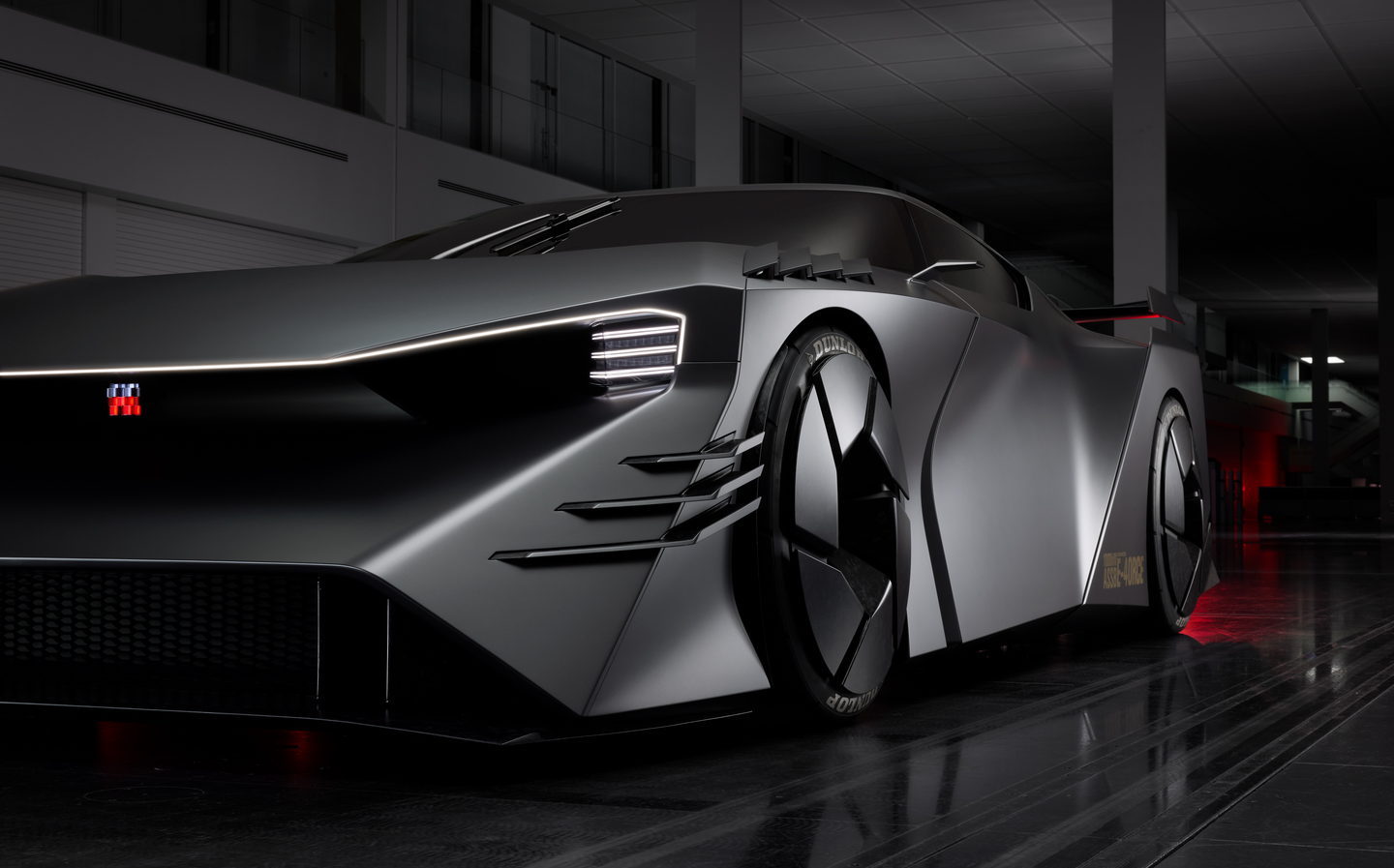The best of Tokyo: Japan Mobility Show's most innovative vehicle concepts
Recycled acrylic bodywork and bamboo interiors, anyone?
The Japan Mobility Show — formerly known as the Tokyo Motor Show — is under way and car manufacturers from the Land of the Rising Sun have pulled out all the stops to display some of their most striking wares, some of which could be heading to showrooms across the world in the near future.
As you’d expect from a forward-gazing event in a technologically advanced society such as Japan, the array of mobility solutions includes not just electric cars, but a whole sweep of smaller vehicles, unusual transportation concepts and even logistical services, all demonstrating how the major car companies envisage we’ll get about in the years to come.
Here are some of our highlights that are on display at the Japan Mobility Show (the JMS – October 26-November 5, 2023) from the likes of Honda, Nissan and Toyota.
Honda’s ‘Dream Loop’
Honda is celebrating its 75th anniversary this year. In the process of marking its storied past while looking to a cleaner, greener future, it themed its stand at the JMS around an idea dubbed ‘Honda Dream Loop’. In the words of the company’s president Toshihiro Mibe, what that means is that Honda’s mobility products and services will enable people to “transcend various constraints, such as time and place”.
Now, while that might sound like something a portentous character would utter in one of the more out-there films of the Marvel Cinematic Universe, what he actually means is that a wider variety of transportation solutions, including “final mile” micro-vehicles, should allow anyone and everyone to travel how they wish in the future, regardless of their location or relative affluence in life.

To that end, the self-driving Cruise Origin microbus was on display. Capable of carrying up to six passengers, its interior can be made completely private, so that people within can use their travel time to, say, hold a business meeting, or spend ‘fun time’ with their family.
Honda, along with GM and the American carmaker’s Cruise autonomous vehicle division, is planning to launch a driverless ride-hail service using the Origin in its homeland by early 2026.
It’s unfortunate that the announcement from Mibe-san came not long before California ruled to suspend Cruise from operating on its streets, following several accidents, including a case where a pedestrian was dragged under its wheels after an accident, and issues such as driving through police roadblocks. Worse, the state’s Department of Motor Vehicles (DMV) claimed the company had misrepresented its safety record. No doubt Honda will have been reading those headlines with interest.
Fortunately the Japanese company had other announcements up its sleeve. Alongside technologies such as an eVTOL (electric vertical take-off and landing) and HondaJet aircraft, the remotely controlled Honda Avatar Robot and Uni-One hands-free wheelchair, the Honda stand also included the Sustaina-C Concept, a Honda-e-like car which enhances its green credentials due to the fact its body is made of recycled acrylic resin.

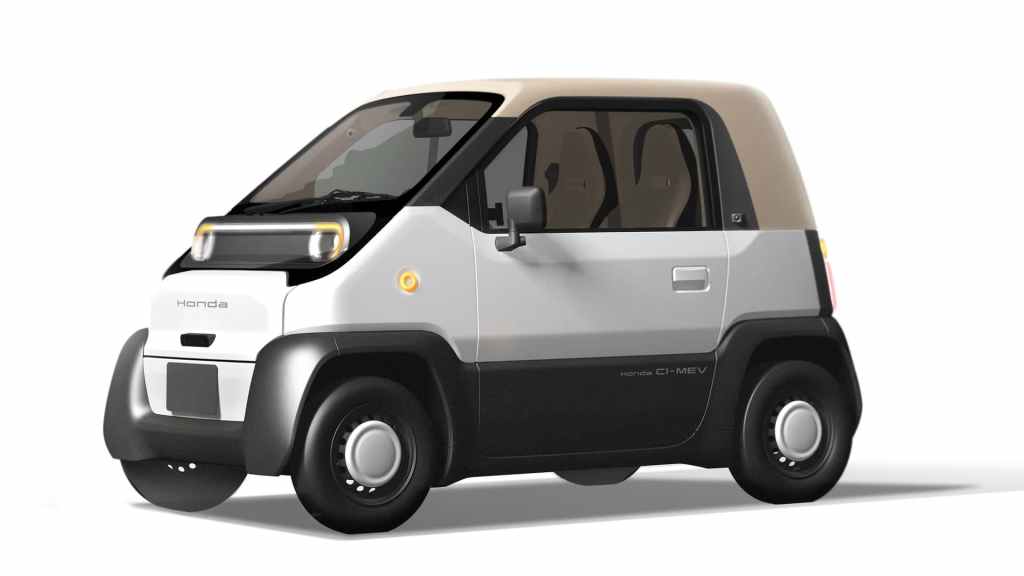
Meanwhile, the CI-MEV is a self-driving micro-mobility vehicle designed to assist in the lives of the elderly, who cannot move about as freely or as far as they did in their youth. Yep, it’s Honda’s vision of the mobility scooter of the future.
But perhaps the most exciting car there, for fans of Honda’s past, is the Prelude Concept. Resurrecting a name last used on a series of sports coupes the company made from 1978 to 2001, it previews a forthcoming range of sportier EVs from the car maker.

Mibe-san said of the Prelude Concept: “Our customers are expecting one more thing from Honda, and that is sports models. Honda has always been committed to creating sporty vehicles. This model will become the prelude for our future models, which will inherit the ‘joy of driving’ into the full-fledged electrified future and embody Honda’s unalterable sports mindset.
“We are diligently progressing with development, so please keep your expectations high for this model.”
Lexus’s slippery bodywork and bamboo interiors
Fresh off the back of an announcement from its parent company Toyota regarding the breakthrough in solid-state battery production, luxury brand Lexus showed off two EVs that will soon make it to widespread production.
The LF-ZC is an electric saloon that previews a production model slated for launch in 2026, while the LF-ZL is a flagship electric SUV presenting a future vision for where the Lexus brand is headed.

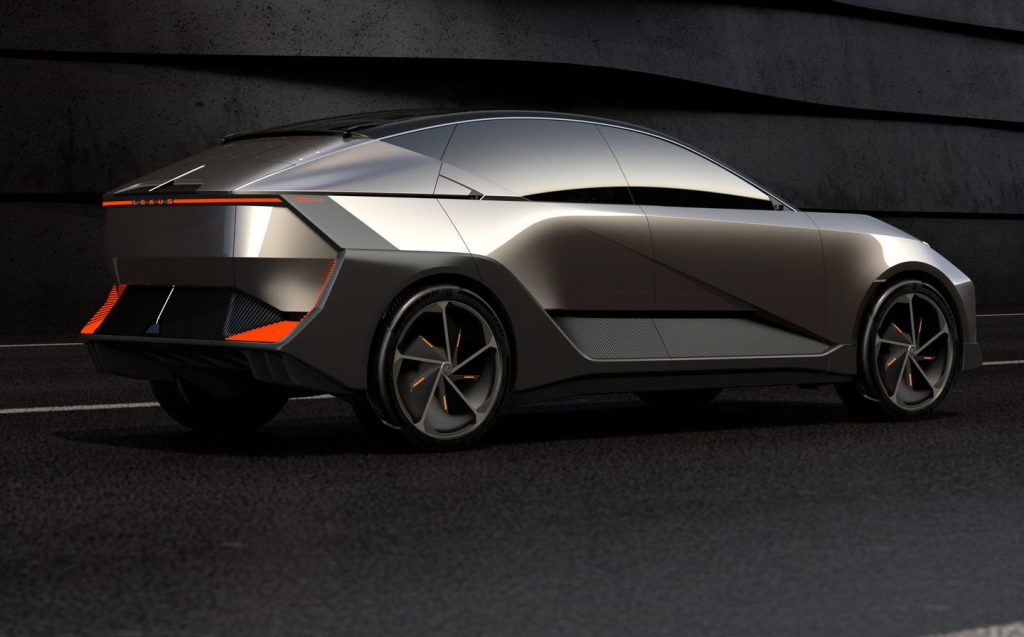

With its theme of “pushing the boundaries of the electrified experience”, Lexus played on the idea that it has been a technological pioneer ever since it appeared in 1989, adding that it wants to be a pure battery-electric vehicle brand in Europe by 2030, and globally five years after that.
Lexus further says that its next generation of EVs will have more versatile packaging, thanks to the downsizing and weight reduction of all their structural components.
Both the LF-ZC and LF-ZL concepts show off the “Provocative Simplicity” exterior design language that will clothe these new electric production models, with an added bonus that their forms are incredibly aerodynamic. Lexus is targeting a coefficient of drag figure of less than 0.2 for the ZC, for example, which in plain terms means it’s one slippery customer when it comes to cutting through the air.

Beyond the bodywork, Lexus’ concepts also demonstrated the next-gen, fully digital intelligent cockpit layout the company intends to adopt. This will be powered by an operating system known as Arene.
Not only will Arene run the human-machine interface, but it will also evolve and tailor the driving experience of any Lexus EV to better suit the main user of the car, using a series of over-the-air software updates.

Alongside the concept EVs, Lexus also showed off the Bamboo CMF Concept, which uses the material extensively in the make-up of the vehicle. Bamboo was chosen as Lexus’ preferred sustainable construction material because it grows quickly, it has significant absorption capacity for carbon dioxide and of course it has been used in Japanese construction and crafts for centuries already.
Mazda’s slinky sports coupé
Mazda’s star of the 2023 Japan Mobility Show was undoubtedly the glorious Iconic SP concept car.

This beauty marries a dual-rotor powertrain with an EV platform, using a “range-extending” hybrid system that is an evolution of that seen in the MX-30 R-EV we recently reviewed.
It’s not hard to imagine the Iconic SP going on sale with an “RX-9 EV” badge. With its low centre of gravity and strong performance, delivering 365bhp in a trim 1,450kg body, the Iconic SP is said to maintain the entertaining driving spirit of the long-serving MX-5 roadster into an electric future.
The dual-rotor range extender wouldn’t even necessarily need to burn petrol. Mazda says it can engineer the combustion part of the Iconic SP’s drivetrain to burn a variety of fuels, including hydrogen, which means it could be virtually carbon-neutral if its battery is charged from mains electric derived from renewable energy.
Mazda’s president and CEO, Masahiro Moro, said: “We love the MX-5 and the world loves the MX-5. We are determined in the age of electrification to keep the joy of driving which the MX-5 represents alive, and the Iconic SP — with its dual-rotor power generator EV powertrain — is our dream solution. A dream we will work hard to launch.”

Talking of the MX-5, the company also took the opportunity of the JMS to display the updated 2024 version of the fourth-gen roadster.
It gains a subtle exterior redesign, mainly involving LED headlights that incorporate daytime running lamps, while inside an 8.8in touchscreen multimedia display and revised instrument panel are drafted into service.
Nissan’s electric GT-R
Nissan has shown off five ‘hyper’ concept vehicles in the lead up to the Japan Mobility Show, that at the rate of one a week. The final, and undoubted highlight of the bunch, was the Hyper Force concept.
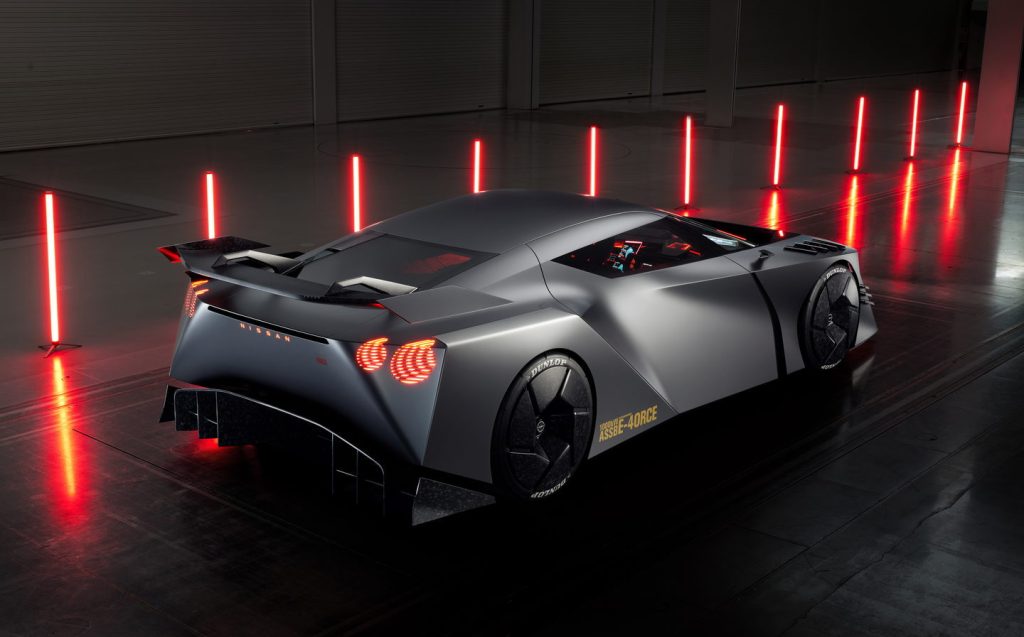
Taking clear visual inspiration from the GT-R the car maker has sold since 2007, the Hyper Force is said to be a “game-changing hyper-EV for racing enthusiasts and gamers who crave the adrenaline rush of the race track, but are also eco-conscious”.


Nissan claims it uses a solid-state battery that can output 1,000kW, which is 1,340bhp in old money. Its spec includes aerodynamic downforce, an advanced form of Nissan’s e-4ORCE all-wheel-drive technology and a lightweight body made of high-strength carbon.
The Hyper Force also has two driving modes, which are ‘R’ for racing and ‘GT’ for grand touring. When switching between these modes, the graphical interfaces inside change colour and display, and these were designed in collaboration with Polyphony Digital Inc — the company behind the Gran Turismo series of racing sim games.

The car can even switch into an augmented reality (AR) and virtual reality (VR) experience, too. If the Hyper Force is stopped, the driver can use a special helmet with blind visors for VR that enables them to enter a gamified driving experience, complete with ‘against the clock’ and online racing modes.
And using skeleton AR visors, then the driver can compete against their own, their friends’ or even professional racing drivers’ digital ghosts on actual circuits, allowing users to test their driving skills on real-world tracks. Nifty.
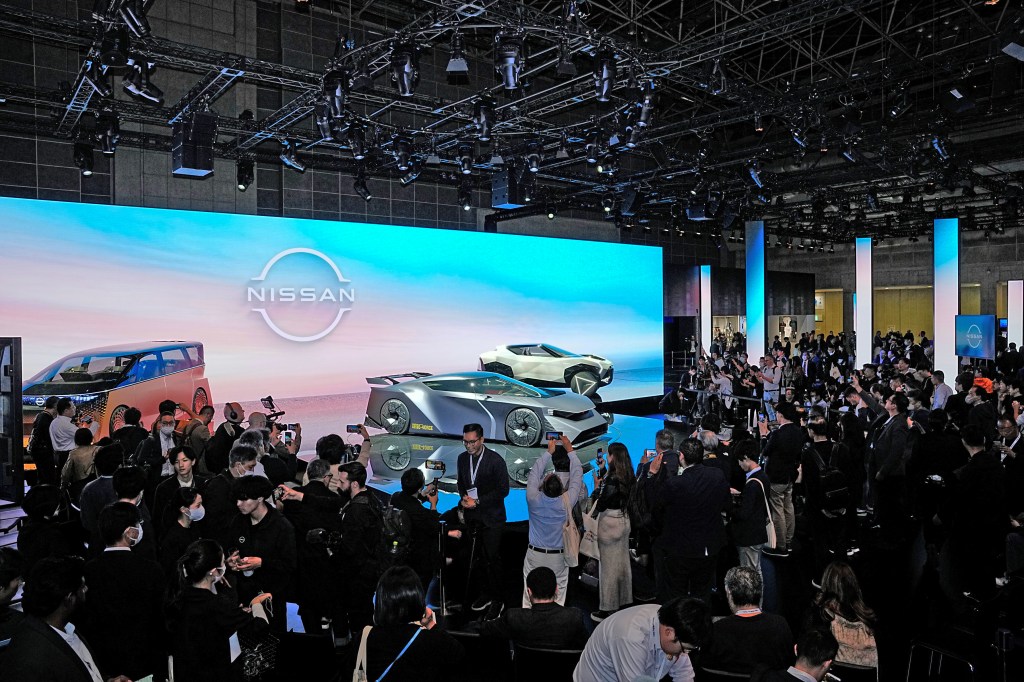
Nissan, celebrating its 90th birthday in 2023, demonstrated the other four EV concepts it released ahead of the event at JMS and CEO Makoto Uchida said: “All five concept cars showcased are symbols of the future and embody our founding spirit of ‘daring to do what others don’t’. Through the power of innovation, Nissan is creating a future where everyone can enjoy the excitement of mobility.”
Toyota’s electric Supra and Land Cruiser
Toyota’s booth was centred around a slogan that might have come from a political campaign: ‘Let’s change the future of cars — find your future’. Its three electric concept models provided that choice for show-goers.
The FT-Se is a sports car that is little Lotus-y but also bears more than a passing resemblance to the current Supra; Honda and Nissan are clearly not the only Japanese brands leveraging their past and present products for a brighter EV future.

It’s a high-performance sports EV that is proposed as one of the production models in the carbon-neutral era. It is said to incorporate expertise from Toyota’s Gazoo Racing motorsport arm.
Inside, the FT-Se has the next-generation Toyota full digital cockpit, something it shares with the Lexus marque, while a low-set instrument panel ensures good forward visibility. Even the driver’s knees are protected with a set of kneepads that protect the joints from G-forces during sporty driving.
The FT-3e, meanwhile, is a next-gen EV that features digital displays running from the lower body to the upper door. These can provide information about the current battery charge, onboard temperature and interior air quality as the driver approaches the vehicle.

It can also transfer energy and data from itself back to the grid, if needed, while “innovative technologies” will enhance customers’ daily lives with new driving experiences and personalised services.
Toyota believes that future mobility will go beyond providing physical transportation tools to becoming a lifestyle partner that’s closely aligned with each customer’s individual values. So both the 3e and Se concepts can evolve themselves over time with various personal customisation options to make them drive and behave just how owners would like.




Toyota is also showing off an electric wheelchair concept, a three-wheeled personality mobility concept, an electric pick-up called the Epu and even a space buggy.
But more down to Earth is an interpretation of the Land Cruiser as an electric vehicle.

The Land Cruiser Se is ideal for off-road due to the high-torque driving characteristics of a battery electric vehicle (BEV), Toyota says.
It combines this with an elegant and stylish design that is clearly a more sculpted and less utilitarian development of the recently-announced 2024 Land Cruiser.

The Land Cruiser Se gets a seven-seat interior, which means it would compete with the likes of the Kia EP9, and all the passengers “benefit from the quietness of the BEV powertrain,” Toyota says.
Related articles
- If you found the Japan Mobility Show exhibits interesting, you may want to read about the radical looking Toyota C-HR
- Keen to go electric? Here are the top 10 longest-range electric cars
- Read our guide to all the car makers’ EV plans
Latest articles
- Should I buy a diesel car in 2025?
- F1 2025 calendar and race reports: The new Formula One season as it happens
- Zeekr 7X AWD 2025 review: A fast, spacious and high tech premium SUV — but someone call the chassis chief
- Denza Z9GT 2025 review: Flawed but sleek 1,062bhp shooting brake from BYD’s luxury arm
- Extended test: 2024 Renault Scenic E-Tech review
- Best-selling cars 2025: The UK’s ten most popular models of the year so far
- Audi A6 Avant 2025 review: Trusty executive estate ticks expected boxes, and there’s still a diesel option
- Keir Starmer eases pressure on carmakers to sell EVs in response to ‘global economic headwinds’
- Ferrari 12Cilindri Spider review: Heady blend of traditional and futuristic becomes even more intoxicating after lid is removed


